Rucking and Weight Lifting: How to use a ruck and weights for ultimate fitness
What is rucking?
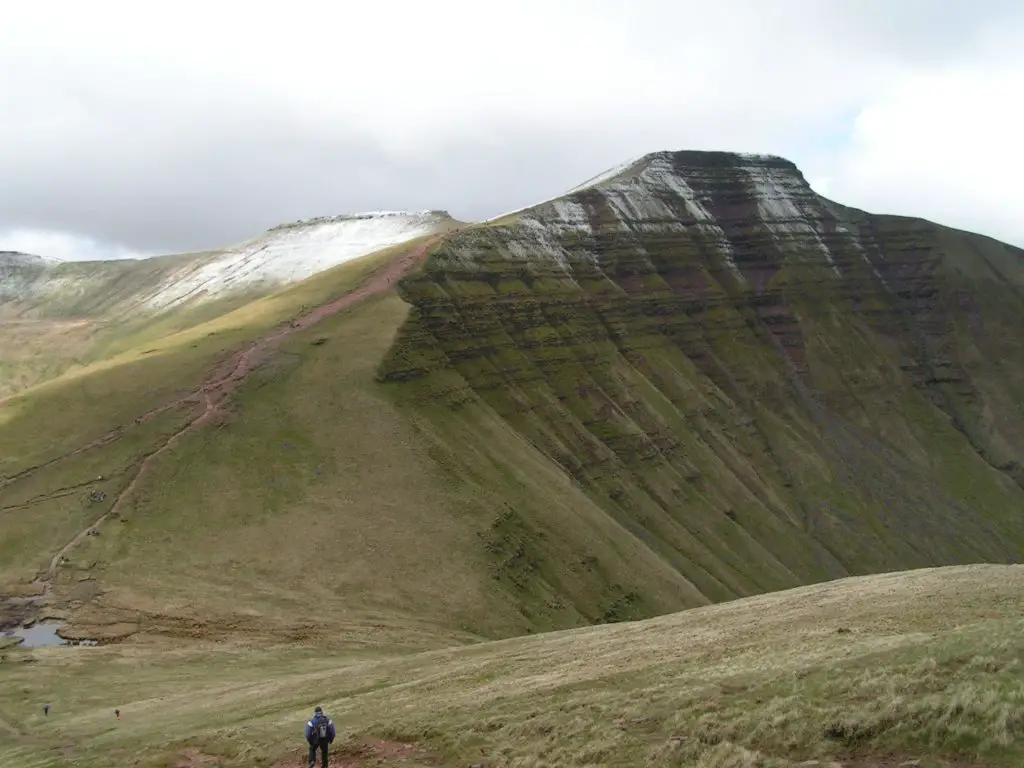
Rucking is an outdoor activity similar to hiking, but usually carried out at a faster pace and originated in the military where there is a requirement to move formations of troops over rugged terrain carrying all warfighting equipment in a rucksack. Participants wear a rucksack which can be loaded with varying weights dependent on the individual’s strength and fitness. For a fuller explanation, see this post: what is rucking?
In summary, rucking is simply walking with a weighted backpack but is typically conducted at a pace aimed at improving your overall fitness.
- What is rucking?
- Rucking benefits
- What muscles does rucking work?
- How to start rucking
- What is weight lifting?
- Benefits of lifting weights
- Combining rucking and weight lifting
- Benefits
- Weight training plan for ruckers
- Caution: a few reasons why a heavy ruck might not be for you
- Is running a better option?
- Summary
Rucking benefits
The number of rucking benefits is enormous. From increased muscle strength (rucking is a form of resistance training) through to cardio gains, rucking is pound for pound of the best workouts you can do. Here’s a breakdown of the full benefits of a rucking march.
Body composition improvements
As anyone who’s rucked for any length of time will tell, an hour of rucking three times a week will improve your overall body composition – and you won’t have to reduce the amount you eat. The combination of moving fast and carrying at least a reasonable amount of weight on your back will burn fat fast and increase lower body muscle mass. Other areas of improvement you’ll see are stronger abs and lower back muscles (we’ll cover the full list of muscles worked in the next section).
I’ve been rucking for years. I also eat a lot of food, which may be a result of the demands a hard ruck places on my body, and the only time I’ve been overweight was following an injury which prevented me from running or going on a ruck. If you eat too much sugar and hydrogenated fat there will be limits to how much weight you can lose, but with a reasonably healthy diet and a few hard rucks per week, you can smash your BMI/body fat percentage in a relatively short period of time.
Burn calories fast

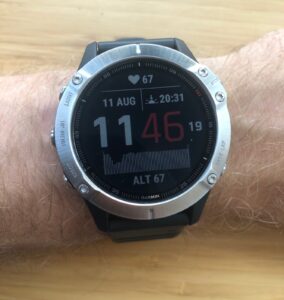
Rucking. Obliterates. Calories. Period. But exactly how many calories are burned in a one-hour session? Here are a couple of examples (please bear in mind the figures aren’t precise – your diet, metabolism, water intake, etc. all affect the rate at which calories are burned. For a more accurate figure, I suggest you use a sports watch (Tactix Delta or Fenix 6 are good tools for tracking the rate at which you burn calories) to get a more accurate figure.
| Terrain | Body weight | Ruck weight | Calories burn per hour |
| Flat | 120lbs | 20 – 40 lbs | up to 464 |
| Flat | 170 lbs | 20 – 40 lbs | up to 657 |
| Flat | 220 lbs | 20 – 40 lbs | up to 850 |
| Hills | 120lbs | 20 lbs | 491 |
| Hills | 170 lbs | 20 lbs | 696 |
| Hills | 220 lbs | 20 lbs | 900 |
I think you’ll agree those are pretty impressive figures for what is in essence a hard walk 😉
Tailored workouts
If you’re a newcomer to this activity, check out our 6 week rucking training plan which has been created with novices in mind. The weights and distances of each ruck start small and increase over time, as does the duration.
So what is a tailored workout? It’s one that can be modified to suit your needs, with ease. Whilst it could be argued pretty much any activity can be tailored to the participants I don’t agree that activities such as running are easily modified to be of use to everyone. Disagree? Please add your thoughts in the comments section.
What I like about rucking is this: you can choose the terrain, the pace, the duration and even the rucking weights to suit your fitness and body composition. You can ruck pretty much anywhere: I travel for work and always have running gear, rucksack and boots in the back of my car which allows me to pick and choose the type of cardio when I’m away from home (and I’ve never felt out of place when I’ve had to ruck in a city like London)
Low impact
Unlike running, where huge forces (up to 7 times your body weight) are placed on your knees every time your foot strikes the ground, rucking is a relatively low-impact form of exercise.
Mental health
Although it might now seem like ancient history, the human race was closeted away for two years whilst COVID rampaged around the world and the resulting decline of good mental health is an obvious and well-documented fact. And a mental health boost is yet another positive benefit that comes with the rucking experience. This paper: https://www.ncbi.nlm.nih.gov/pmc/articles/PMC4204431/ explores the mental health benefits that come from being outdoors, and the only place you can ruck properly is… outdoors.
Rather than read the full document, here’s a quick summary: being outdoors improves focus, clarity and mental health. Add in a challenging ruck and you’ll experience a rush of dopamine and endorphins.
What muscles does rucking work?
The number of muscles exercised on a ruck is vast and the key point to note is you’ll build an athletic physique rather than the bulky bodybuilder (which in itself takes years of hard work, expensive gym membership and large quantities of ‘supplements’). Here’s a full list:
Lower body
- quads – the four larger muscles that form the bulk of your thigh mass
- hamstrings – the long, slender muscles running the length of the rear of your thigh bone
- glutes – the large muscles that are your buttocks which, incidentally, are the largest and most powerful muscles in your body
- calves – the two largest muscles of your lower leg.
In addition to the above, rucking also builds and strengthens the following upper body muscles
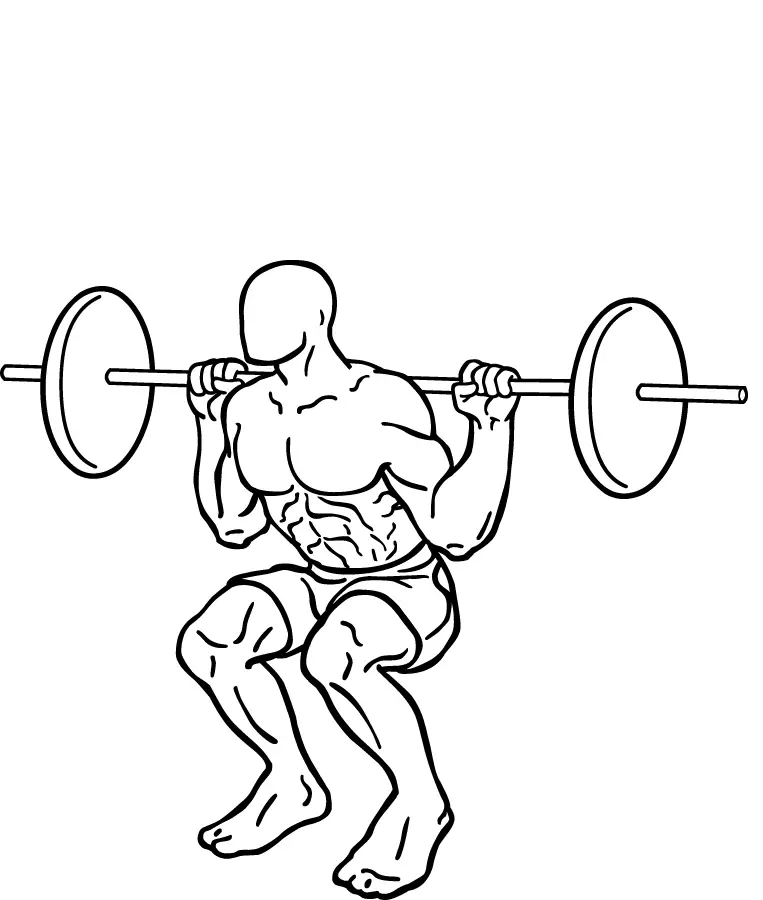
Upper body
- back – in particular the lower back strength
- core – abs and obliques ( the muscles running down either side of your abdomen)
- shoulders – primarily the traps which are worked hard when you have a heavy ruck
How to start rucking
Like any kind of training, preparing to start rucking requires some preparation and equipment, but unlike some activities, you require very little specialist equipment (you can probably buy all the gear you need for around £300/$400). The key consideration you do need to make is around your current level of fitness and whilst I’m not a medical expert, and don’t believe you need to ask your GP/physician to give you a full checkup, you do need to look at your current state of fitness in order to build a realistic plan that:
- doesn’t cause you to burn out in a matter of weeks;
- isn’t so tame you’ll get no benefit
As I mentioned earlier in this post, Jake and I have put together a rucking training plan aimed at newcomers to this activity – it’s a step-by-step guide that takes you from couch to 5 miles/8 kilometres over a period of 6 weeks.
Steps to starting a rucking regimen
First, you’ll need the right gear:
A good quality rucksack. The minimum capacity should be 35+ litres which provide ample space for you to increase the amount of gear you carry as your training progresses. We’ve used a number of different rucksacks for our training sessions and gear such as the Deuter Guide 35+ and Lowe Alpine Airzone 35 have proven both durable and capable.
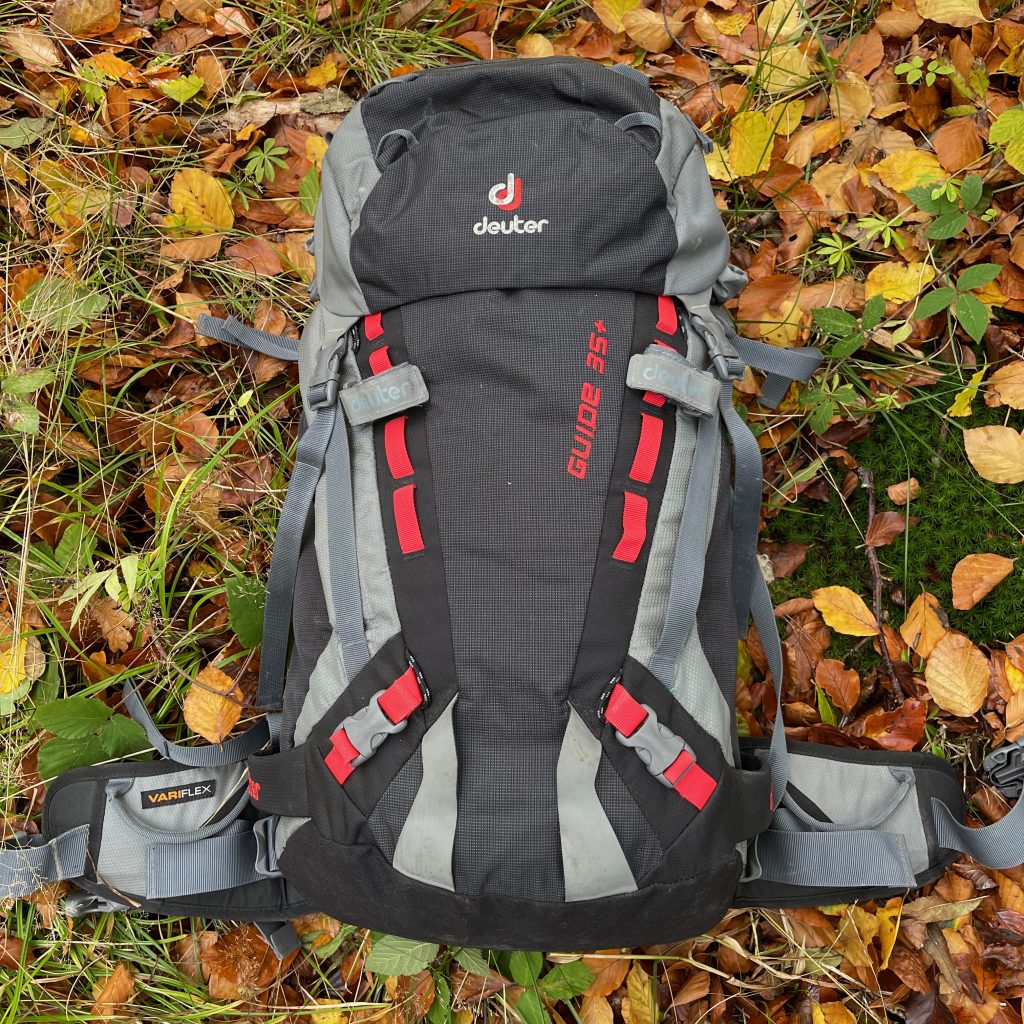
Hiking boots or trail running shoes. This is important – most of your training sessions will be conducted on the trails and you need footwear that is both comfortable when worn over extended periods of time and provide ample grip on loose or muddy terrain. My all-time favourite boots are the Merrell MOAB 2, with my Altra Lone Peak running shoes coming a close second. Recently, I’ve been testing my Keen Targhee III boots on gentle rucking sessions – I’ll let you know how they fare. In all likelihood, the footwear you choose will be the most expensive purchase so we’ve put together a list of the best boots for trucking.
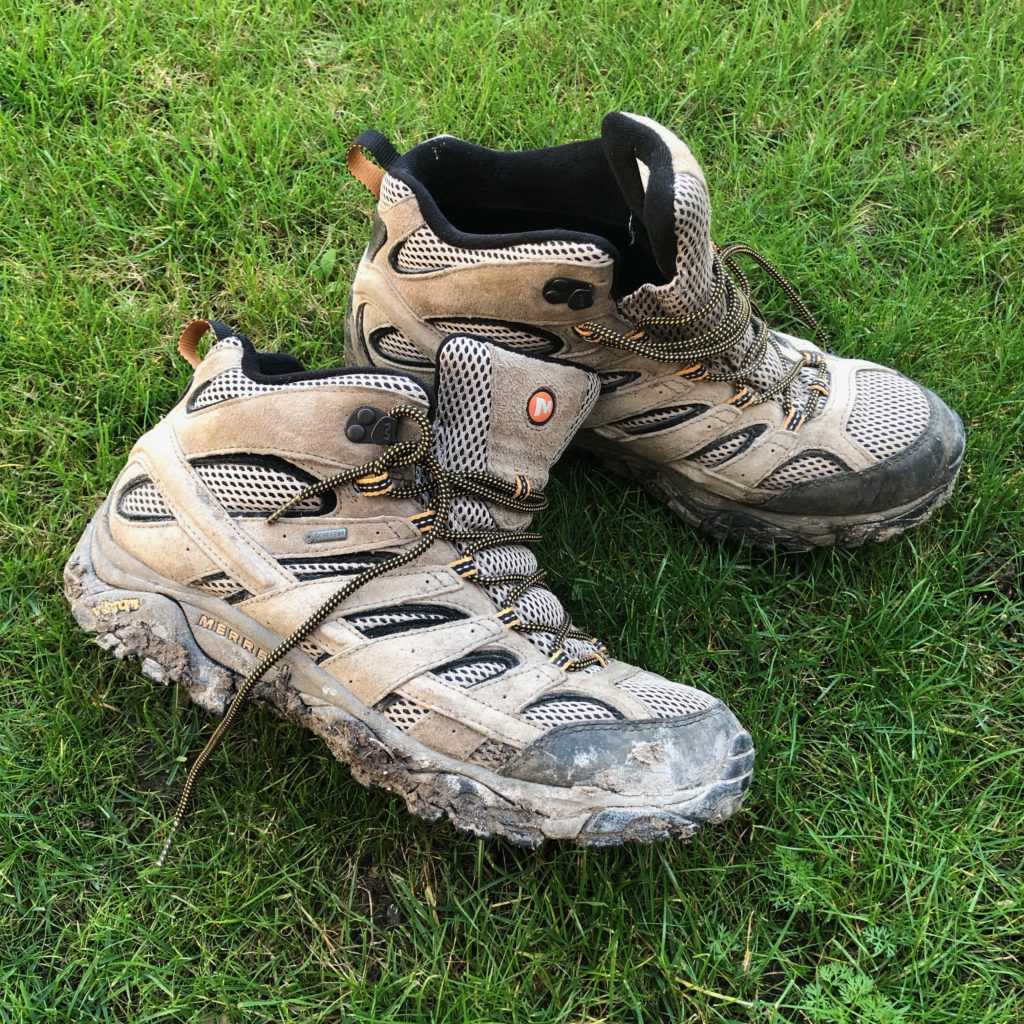
Clothing. Sorry, but no jeans – they soak up and retain moisture, including sweat, and if you’re planning to ruck on a chilly day you risk cold injuries or worse. Running shorts are fine in warm weather; winter rucking clothing choices should include lightweight hiking clothes that breathe well.
Next, you’ll need a plan:
- Start small. A 3 – 5 km ruck is a good distance for beginners as these are distances most able-bodied people can manage. What’s more, you won’t travel too far from your start point (car, home, public transport stop, etc) if you feel the need to stop your training session.
- Go light. The worst mistake you can make when starting your training is to go too heavy. Carry a weight that doesn’t feel like it’s going to bend your spine out of shape – 15lbs is a good starting point – and increase as your fitness and strength improve over time.
- Find a training plan. Ideally, start with a six-week basic programme that takes you from novice to the point where you can cover 5 – 10 km without collapsing at the end of your ruck.
What is weight lifting?
Weight lifting is an activity in which participants use weights, often progressively heavier, to improve strength, condition and fitness. At the furthest end of the lifting spectrum are powerlifters and bodybuilders, but we’re not going to delve into those workouts as the weight lifting we will discuss focuses on strengthening the key muscles used during a ruck.
Benefits of lifting weights
Like rucking, there are plenty of benefits that come with lifting weights and I’m going draw your attention to the ones that matter (in my eyes):
Healthier in old age
For many years we were told cardio was the most important form of exercise for maintaining good health in our later years, but this information has now been superseded. It turns out your body will derive great health benefits simply by having more muscle mass and strength which means the need to continue long-distance running workouts into your 70s and 80s has been debunked! Joking aside, cardio is important and running is the fastest most effective way to get your body in shape, and keep it so.
Here’s what the research says about the importance of strength in old age: resistance training can prevent and even reverse the loss of muscle mass, power and strength that people typically experience as they age (keywords are underlined). And here’s the link to a full research paper for anyone with a few hours to spare – https://www.nia.nih.gov/news/how-can-strength-training-build-healthier-bodies-we-age
You look good
There is no denying the appeal of a well-muscled and, maybe, toned body. After all, who doesn’t want to look good? I have to admit, this aspect of lifting weights does appeal to me and I’m sure you probably agree muscular legs, chest, and arms are very easy on the eye (even if it is your own eyes looking in the mirror).
Muscle burns calories
Fact: the more muscle you carry the higher your calorific burn rate. In fact, strength training like any other form of exercise will consume calorie after calorie, even when you are at rest. But let me caveat those comments: the number of calories burned by having large muscles does not produce the ‘blowtorch effect’ some marketers would have us believe. Research shows that, on average, for every pound of muscle you carry your body will consume 6 calories per hour which may not seem like much but when you start your rucking workouts and add that number to the number burned during an hour of steady, or hard, work the numbers soon add up.
Combining rucking and weight lifting
Why would you want to combine rucking and moving big plates of metal in the gym? Simple – the combined effects of strength training and a 3 times per week ruck plan will produce amazing results. Really, once you really get into a training plan you’ll notice the improvements to your physical and mental health, strength and stamina come along in leaps and bounds. For me, the combination of rucking and lifting weights is the perfect melding of strength and cardio training.
Benefits
Lower impact than running
The combination of using weights and rucking is a lower impact mix of exercises than running alone, or running and weight training. As mentioned earlier, simply rucking a few times a week imposes far fewer stresses on your knees, ankles and hips when compared to a similar running regimen.
Full body workout
A further benefit of creating a training plan that incorporates both rucking and weight lifting is you get a full-body workout. The obvious muscle groups you’re going to target in the gym are those of your legs and lower body, but you also need to add in exercises to develop your upper body, in particular your shoulders. But you also need to add in exercises for your arms and chest otherwise your body will look out of proportion. The amount of weight you move doesn’t need to be excessive – in our rucking training plan, we have a section that deals specifically detailing the main exercises you need to build up the main muscle groups you’ll need to support your rucking journey. If you want to develop other muscles, take a look at this post.
A Rucking and weight lifting combo is easy to do
Assuming you follow our plan and schedule 3 days per week for rucking, you then have a full 4 days where you can lift weights to improve your strength. The only word of caution I have is this: if you’re planning a heavy leg day in the gym avoid rucking for at least a couple of days after as you’ll no doubt feel tired, in particular, if you’ve been lifting heavy weight.
Minimal gear investment
Beyond the gear you’ll need for rucking, the only other investment you’ll likely need to make is appropriate gear for the gym. Whilst it’s tempting to hit the weights wearing your jeans and t-shirt, there is an etiquette to most gymnasiums and anything but sports clothing is frowned upon. But the investment is minimal: a T-shirt, shorts and sports shoes are more than adequate.
If you want some guidance, here’s a weight training plan designed for building the muscles you need for rucking and other muscle groups (arms, chest, abs, etc).
Weight training plan for ruckers
Time to hit the gym. Below is a list of exercises I use to build muscles for trucking. I haven’t added specific weights as your strength and fitness will likely be different to mine.
| Weeks 1 & 2 | Activity | Reps |
| Monday | Squats Push-ups Bent-over Rows Planks | 3 sets of 8-10 reps 3 sets of 10-12 reps 3 sets of 8-10 reps 3 sets of 30 seconds |
| Tuesday | Light cardio (walking or cycling) Stretching and mobility exercises | |
| Wednesday | Deadlifts Lunges Leg Press Russian Twists | 3 sets of 8-10 reps 3 sets of 10-12 reps per leg 3 sets of 8-10 reps 3 sets of 15 reps (use a light weight or medicine ball) |
| Thursday | Yoga or stretching routine Foam rolling for muscle recovery | |
| Friday | Bench Press Pull-ups or Lat Pulldowns Dumbbell Shoulder Press Planks | 3 sets of 8-10 reps 3 sets of 8-10 reps 3 sets of 8-10 reps 3 sets of 30 seconds |
| Saturday | Light cardio Stretching and mobility exercises | |
| Sunday | Rest |
In weeks 3 and 4 your aim is to increase intensity by increasing the weights used for your strength exercises slightly. Aim for progressive overload to continue building strength.
| Weeks 5 & 6 | Activity | Reps |
| Monday | Start with a light load and gradually increase it over the weeks. Aim for a 30-60 minute ruck walk at a moderate pace. Use proper form and maintain good posture. | |
| Tuesday | Squats Push-ups Bent-over Rows Planks | 3 sets of 8-10 reps 3 sets of 10-12 reps 3 sets of 8-10 reps 3 sets of 30 seconds |
| Wednesday | Increase the load slightly and aim for a 45-75 minute ruck walk. Focus on maintaining a steady pace. | |
| Thursday | Deadlifts Lunges Leg Press Russian Twists | 3 sets of 8-10 reps 3 sets of 10-12 reps per leg 3 sets of 8-10 reps 3 sets of 15 reps (use a light weight or medicine ball) |
| Friday | Increase the load further and aim for a 60-90 minute ruck walk. Pay attention to your form and posture throughout. | |
| Saturday | Yoga or stretching routine Foam rolling for muscle recovery | |
| Sunday | Rest |
Caution: a few reasons why a heavy ruck might not be for you
We’ve explored the reasons why rucking is such a powerful form of exercise when it comes to improving fitness fast and without the injuries that many runners experience, but is there a reason why rucking may not be suitable? Yes. When you ruck, one of the main aims is to slowly increase weight over time so as to up the rate at which your body burns off excess calories, but at some point – for some people – the weight carried becomes an issue or impediment.
Whilst this doesn’t mean you should stop rucking, you do need to consider the right weight to carry. If you have existing injuries in places that affect mobility (your legs and ankles) you need to go easy when you start training and really think about how much weight you can carry when you’re rucking.
Upper body and lower back injuries can also place constraints not only on the weight you carry in your ruck but also on the terrain you’ll be covering. When combined with a heavy load, loose gravel, muddy trails and technical routes, place a big demand on your body and even those seemingly minor injuries can be aggravated by rucking with a heavy load. If in doubt, drop the weight and stick to easy routes until any injuries have healed.
Is running a better option?
The rucking vs. running debate has been raging since the proponents of the ruck popped their heads above the proverbial parapet, and the discussion continues. From personal experience, I’d say there’s a higher calorie burn and your cardio improves faster when you run but it doesn’t build muscles in the same way as a moderate to hard ruck. But, as we’ve explored, rucking is a lower-impact exercise than running.
Summary
Rucking – it seems like a new fad, but it’s not. The military has been using this form of exercise for a long time to produce supremely fit soldiers capable of covering huge distances, carrying large loads in a ruck (or bergen, as we say in the UK), and then being able to do their job. If it’s an effective way for soldiers to get fit, it will work for you.
Adding in weights will only improve your performance (here’s a secret: most military personnel work hard in the gym to build the muscles they need to perform their job). The training plan linked at the top of this page contains only a six-week plan for rucking, not a weight programme… but I’m working on that now and will update this post when it’s ready.
Until then: get outdoors, ruck hard, and get fit fast!






2 Comments